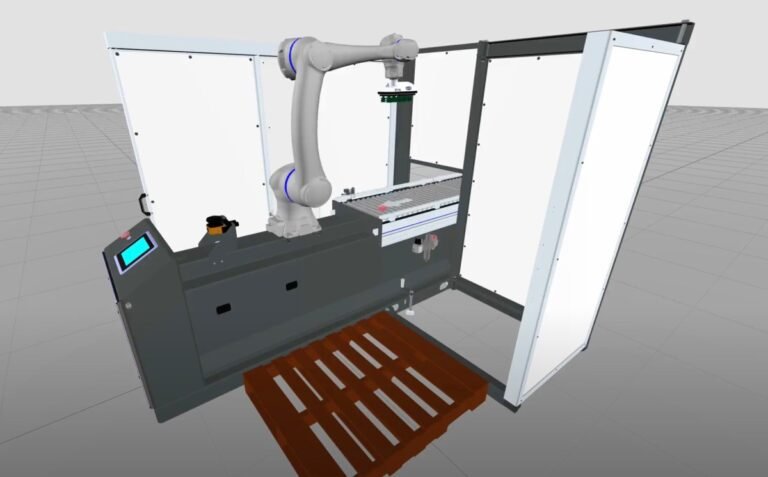It’s easy to lose track of the fact that robotics is as much a software problem as it is a hardware problem. Programming is understandably overshadowed by the allure of mechatronics, but without the right software solution, you have nothing more on your hands than an expensive paperweight. The road to widespread adoption of robotics is fraught with unexpected problems that may ultimately hinder real-world use. There are many problems in the search for software solutions.
Jacobi Robotics was founded in 2022 with a specific problem in mind: singularities. Confusingly, the word means something entirely different to robotics than it does in the world of Ray Kurzweil’s AI progress projection.
In robot-land, the concept is much more nuanced, requiring some actual knowledge of the category to fully understand. It is a term rarely encountered outside of research papers. It is, however, a very real issue with real-world implications.
“Singularities are the Achilles’ heel for industrial robots,” notes Jacobi. “In repetitive tasks, where the robot follows the same movements repeatedly and blindly, robots can be programmed to avoid peculiarities through weeks of tedious manual adjustment of robot paths. But for many robot applications, robot paths must be modified periodically due to small changes in materials or thermal expansion.”
If you’re familiar with robotics stuff, you’ve probably heard the term “degrees of freedom” in relation to, say, a robot arm with six or seven degrees of freedom. This refers to the joints of the system and the axes along which these joints can move. Singularities are points in space where the robot cannot move. When this happens, a human generally needs to step in to get it back up and running.
Jacobi Robotics takes its name from the Jacobian matrix, which – in turn – is a reference to the pioneering nineteenth-century German mathematician Carl Jacobi. In the world of robotics, the concept refers to the relationship between the velocities of joints and end-effectors. To further simplify something I’ve already oversimplified, the concept and the company it’s named after is in the business of robot path planning.
Jacobi Robotics was founded by a quartet of robotics students at UC Berkeley, along with Professor Ken Goldberg. Along with serving as the company’s chief scientist, Goldberg is also the co-founder of robotic package sorting company Ambi Robotics, so he’s been through this rodeo before.
Initially, the team focuses almost exclusively on the issues surrounding singularities, which can stop a robot dead in its tracks at unexpected times. In the world of robotic arms, this is a big problem for basic applications like waste collection, package sorting, palletizing – pretty much the basic things we talk about when we talk about industrial robots.
Jacobi has been in pilots with select partners. That list includes automation developer Formic, as well as a larger consumer electronics company the company isn’t ready to name yet (you know how these things go in the corporate world). According to Formic, Jacobi’s approach to attacking specifics has significantly reduced development times, even at this early stage. It’s certainly in the best interest of a startup like Formic to deal with as many problems as possible during the development process, rather than having to send technicians after the fact.
Along with Goldberg, the company’s founders include CEO Max Cao, CPO Yahav Avigal, Chief Architect Lars Berscheid, and Chief Roboticist Jeff Ichnowski (who also serves as an adjunct professor at CMU’s Robotics Institute). Jacobi closed a $1 million pre-seed in early 2023 and is currently focused on developing a suitable seed as it seeks to bring its solution to market. Current investors include Swift Ventures and Berkeley SkyDeck, the UC Berkely accelerator, which included the startup as part of its recent demo day.
The software currently offers support for a number of the largest robotic arms vendors, including ABB, Fanu, Universal and Yaskawa.
